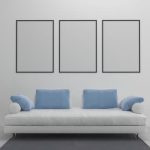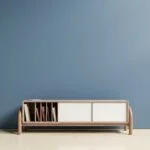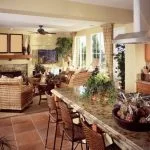Home decor holds great significance in Islam, as it plays a vital role in creating a peaceful and harmonious living environment. However, the use of sculpture as a form of art in home decor raises questions about its permissibility for Muslims. Can Muslims keep sculpture as home decor? This article delves into the religious teachings, historical context, contemporary interpretations, and cultural considerations surrounding this debate to provide a comprehensive understanding of the topic.
In the Islamic tradition, the adornment of one’s home with aesthetically pleasing objects is encouraged, as it reflects a sense of beauty and appreciation for God’s creation. However, when it comes to sculptures specifically, there are varying perspectives within the Muslim community regarding their permissibility as home decor. This article aims to explore these differing viewpoints and shed light on the religious teachings that inform them.
Furthermore, by examining the historical evolution of sculpture in Islamic culture and its impact on modern-day home decor practices, we can gain insight into how these traditions have shaped contemporary interpretations of using sculptures as part of interior design. Additionally, we will also consider alternative decor options that align with Islamic principles while still allowing for artistic expression, addressing the need for balance between aesthetic appeal and religious adherence in Muslim households.
Understanding Islamic Teachings on Sculpture
In Islam, home decor holds significant importance as it contributes to creating a serene and spiritually uplifting environment. However, when it comes to using sculptures as part of home decor, there is often a debate among Muslims regarding its permissibility. Islamic teachings on sculpture are rooted in the prohibition of creating images of living beings, which has historically influenced the use of sculptures in Muslim households.
From an Islamic perspective, the use of sculptures as home decor can be a complex issue. The Quran and Hadith emphasize the avoidance of creating images or idols that could lead to worshipping anything other than Allah. This principle stems from the idea that only Allah has the power to give life, and creating images or representations of living beings may detract from the focus on divine worship.
Historically, Islamic art has been characterized by intricate geometric patterns, calligraphy, and architectural designs, largely due to the prohibition on representing living beings. However, as Muslims have settled in diverse regions across the world, there have been various interpretations and adaptations of traditional Islamic art forms. As a result, some Muslim communities have integrated cultural influences that allow for the inclusion of sculptures in their home decor while adhering to Islamic principles.
- Sculptures depicting non-living objects or abstract forms can be used as home decor.
- Calligraphy and geometric patterns are acceptable alternatives for adorning homes in ways that align with Islamic teachings.
- Seeking guidance from religious scholars or leaders can help navigate the permissibility of specific sculpture pieces within individual households.
Historical Context
The evolution of sculpture in Islamic culture has had a significant impact on modern-day home decor practices. In traditional Islamic art, the use of human and animal forms in artistic expression was limited due to religious teachings. This led to the development of intricate geometric patterns, calligraphy, and arabesque designs as dominant themes in Islamic artistic traditions. However, historical evidence suggests that the use of sculptures in Islamic societies was not entirely prohibited.
During the early Islamic period, there are instances where sculptures were used to adorn architectural structures such as palaces, mosques, and tombs. These sculptures often depicted plant motifs, mythical creatures, and geometric designs rather than human or animal forms. The purpose of these sculptures was primarily decorative and symbolic, serving to enhance the aesthetic appeal of the built environment without conflicting with religious sensibilities.
In modern-day home decor practices among Muslims, the influence of historical sculptural traditions can be observed in various art forms such as carved woodwork, metalwork, and intricate ceramic tiles. These artistic expressions draw inspiration from the rich heritage of Islamic art and architecture while adhering to religious guidelines that discourage the depiction of living beings. As a result, many Muslim households incorporate sculptural elements that align with these cultural and religious considerations.
| Islamic Artistic Traditions | Modern-Day Home Decor Practices |
|---|---|
| Geometric patterns | Incorporation of geometric designs in decorative elements such as wall art and furnishings. |
| Calligraphy | Displaying Arabic calligraphy as a prominent feature in interior design, including on wall hangings and textiles. |
| Arabesque designs | Utilizing intricate arabesque motifs in architectural details and ornamental objects within the home. |
Overall, understanding the evolution of sculpture in Islamic culture provides valuable insights into how Muslims can embrace artistic expression while respecting religious teachings. By acknowledging historical precedents and cultural influences, individuals can navigate the complexities of integrating sculptures into their homes with sensitivity towards their faith. Furthermore, this awareness encourages creativity and innovation in finding alternative decor options that uphold Islamic principles while celebrating the diversity of art forms within Muslim communities.
Contemporary Interpretations
The question of whether Muslims can keep sculpture as home decor is a topic that continues to spark diverse viewpoints within the Muslim community. While some adherents believe that sculptures are inherently prohibited due to religious teachings, others argue for a more nuanced understanding that allows for artistic expression within certain parameters. This section delves into the contemporary interpretations of this issue and sheds light on the varying perspectives held by Muslims around the world.
Traditionalist Viewpoint
Those who adhere to a more traditional interpretation of Islamic teachings often advocate for strict prohibition on the use of sculptures in home decor. They argue that historical religious texts and scholars have consistently discouraged the use of human or animal figures in artwork, deeming them as potentially leading to idolatry or vain desires. Therefore, adherents following this viewpoint may opt for alternative forms of artistic expression when adorning their homes, such as calligraphy, geometric patterns, or nature-inspired motifs.
Progressive Perspective
On the other hand, there is a growing segment within the Muslim community that advocates for a more progressive approach to interpreting Islamic teachings on sculpture and home decor. Proponents of this viewpoint emphasize the importance of contextualizing religious guidelines within modern society and believe that art can be enjoyed and appreciated without conflicting with core Islamic principles.
They argue that as long as sculptures do not depict religious figures or convey messages contrary to Islamic values, they can be incorporated into home decor without compromising faith.
Middle-Ground Stance
In addition to these contrasting viewpoints, there are also individuals within the Muslim community who adopt a middle-ground stance on the permissibility of using sculptures as home decor. This group acknowledges both the concerns raised by traditionalist interpretations and the desire for creative expression put forth by progressive perspectives. As a result, they seek to strike a balance by carefully selecting sculptures that align with Islamic aesthetics and ethical considerations while reflecting personal tastes and cultural influences.
Overall, it is evident that contemporary interpretations regarding keeping sculptures as home decor among Muslims are varied and reflective of individual beliefs shaped by religious understanding, cultural backgrounds, and personal preferences. As such, it is essential for each household to navigate this decision thoughtfully in alignment with their own spiritual convictions while appreciating diverse perspectives within the broader Muslim community.
Cultural Considerations
The acceptance of sculptures as home decor in Muslim households can vary significantly based on regional and cultural differences. While some Muslim communities may embrace the use of sculptures as a form of artistic expression, others may adhere to more conservative interpretations of Islamic teachings, which discourage the display of human or animal figures. It is essential to consider these cultural nuances when exploring the intersection of art and religious traditions in Muslim homes.
To gain a better understanding of how regional and cultural differences influence the acceptance of sculptures in Muslim households, it is crucial to examine specific examples from diverse Muslim-majority countries. For instance:
- In Turkey, the use of calligraphy, geometric patterns, and floral designs is prevalent in home decor, reflecting the country’s rich artistic heritage that aligns with Islamic principles.
- In Saudi Arabia, minimalist and abstract art forms are favored for home decoration, steering clear of any depictions of living beings to comply with traditional interpretations of Islamic teachings.
- In Indonesia, traditional wood carvings and textiles are popular choices for embellishing homes, showcasing the region’s unique cultural identity while respecting Islamic guidelines regarding visual representation.
It is evident that regional and cultural influences play a significant role in shaping the decorative choices within Muslim households. The diversity of artistic expressions across different regions can offer valuable insights into how Muslims navigate the interplay between art and religious observance in their homes. Understanding these variations can equip individuals with a broader perspective when considering sculpture as a potential decor option.
Alternative Decor Options
Calligraphy and Islamic Art
One of the most popular alternatives to sculptures for Muslim home decor is the use of calligraphy and Islamic art. Calligraphy holds deep significance in Islamic culture, with Quranic verses and religious texts often being beautifully written and displayed as a form of art.
Utilizing calligraphy and Islamic art not only adds aesthetic value to a home but also serves as a reminder of one’s faith. Intricate designs, geometric patterns, and arabesques are also commonly used in Islamic art, providing a wide range of options for decorating within the confines of religious principles.
Natural Elements and Greenery
In Islam, nature is considered a sign of Allah’s creation, making it an ideal choice for home decor. Bringing natural elements such as plants, flowers, and water features into the home not only adds an element of beauty but also reflects the appreciation for the natural world emphasized in Islamic teachings. The use of greenery can create a serene and peaceful atmosphere within the home, promoting tranquility while remaining in accordance with religious beliefs.
Textile and Fabric Arts
Another alternative to sculptures in Muslim home decor is the use of textile and fabric arts. From decorative wall hangings to intricately woven carpets and tapestries, these forms of artistic expression can add color, texture, and cultural richness to any living space.
Textile arts offer a diverse array of options that can be tailored to individual preferences while still respecting Islamic principles on imagery and representation. By incorporating these fabric-based artworks into their homes, Muslims can maintain a visually appealing environment that aligns with their religious values without compromising on creativity or style.
Respecting Religious Sensitivities
In a multicultural society, it is crucial to consider the beliefs and practices of others when choosing home decor, especially for those following religious traditions. This consideration becomes even more significant in the case of Muslims who may have specific guidelines regarding the display of certain art forms within their homes. While Islamic teachings do not explicitly prohibit the use of sculptures as home decor, there are various cultural and religious considerations that can influence individual choices.
It is important to recognize that interpretations of Islamic teachings on art and home decor can vary among different Muslim communities. Some may embrace the use of sculptures as a form of artistic expression, while others may opt for alternative decor options that align more closely with traditional Islamic principles. Understanding these diverse viewpoints can lead to greater respect and appreciation for cultural differences within a multicultural society.
When navigating the intersection of art and religious traditions in their homes, Muslims may choose to explore alternative decor options that allow for creative expression while still respecting their religious sensitivities. For example, calligraphy, geometric patterns, and floral motifs are commonly used in Islamic art and can be incorporated into home decor in ways that honor both aesthetic preferences and religious values.
Overall, the key takeaway is to approach home decor choices with sensitivity and an open mind, recognizing that individuals from different cultural and religious backgrounds may have varying perspectives on what constitutes appropriate decor. By respecting these differences, we can create inclusive spaces that celebrate diversity while honoring everyone’s beliefs and practices.
| Home Decor Consideration | Importance |
|---|---|
| Respecting Cultural Differences | Crucial for inclusive spaces |
| Interpretations of Art within Islam | Vary among different Muslim communities |
| Alternative Decor Options | Allow for creative expression while respecting religious values |
Conclusion
In conclusion, the discussion on whether Muslims can keep sculptures as home decor is a complex and nuanced one. While Islamic teachings traditionally discourage the use of sculptures in residential spaces, there is a growing acceptance of artistic expression within the Muslim community.
Through exploring the historical context and contemporary interpretations, it is evident that there are diverse viewpoints on this matter. The influence of cultural considerations cannot be overlooked, as regional and cultural differences play a significant role in shaping attitudes towards sculptures as home decor.
For Muslims navigating the intersection of art and religious traditions in their homes, it is important to consider alternative decor options that align with Islamic principles while still allowing for artistic expression. This may include calligraphy, geometric patterns, or other forms of art that do not depict living beings. By respecting religious sensitivities and being mindful of the beliefs and practices of others, individuals can create a harmonious living space that reflects their artistic inclinations without compromising their faith.
Ultimately, the decision to keep sculptures as home decor for Muslims is a personal one that should be made with careful consideration of both religious teachings and individual preferences. By engaging in open dialogue and seeking guidance from religious scholars, individuals can make informed choices that uphold their faith while also embracing creativity and beauty in their living environments.
It is through this thoughtful approach that Muslims can find balance in expressing themselves artistically within the parameters of their religious traditions.
Frequently Asked Questions
Are Statues Allowed in Islam?
In Islam, statues and sculptures depicting living beings are generally not allowed because they can be seen as a form of idolatry. However, non-living objects or abstract art are generally accepted in Islamic culture.
Is It Haram to Do Sculpting?
Sculpting living beings is considered haram or forbidden in Islam due to the belief that it can lead to the temptation of idol worship. However, sculpting other non-living objects or creating abstract art is permissible in Islamic tradition.
What Kind of Art Is Allowed in Islam?
The kind of art allowed in Islam includes calligraphy, geometric patterns, and arabesque designs which are commonly found in Islamic architecture and decoration. These art forms focus on non-representational imagery and are considered halal or permissible in Islam.

I’m thrilled to be your companion on this exciting journey through the world of home decor and design. With a passion for turning houses into homes and a keen eye for the finer details, I’m here to help you transform your living spaces into beautiful, functional, and meaningful havens.





